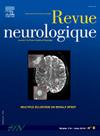Factors predicting seizure control and delivery outcomes in women with epilepsy with planned and unplanned pregnancy
IF 2.3
4区 医学
Q2 CLINICAL NEUROLOGY
引用次数: 0
Abstract
Objective
To determine and ascertain factors influencing seizure control and maternal and neonatal outcomes in women with epilepsy (WWE) with planned versus unplanned pregnancies.
Methods
One hundred twelve pregnant WWE were prospectively evaluated for over an eight-year period. Patients were subsequently evaluated at 3, 6, and 12 months after delivery and then were followed up by a neurologist at least three years after delivery.
Results
The proportion of the patients with increased seizure frequency was higher in focal epilepsy versus generalized epilepsy (P < 0.05). The occurrence of seizures during pregnancy was associated with poor seizure control one year prior to the pregnancy and nonadherence to treatment (P < 0.0001). Structural brain abnormalities were associated with a higher risk of seizures during pregnancy (P = 0.03). Women with seizures during pregnancy (P = 0.0069) and with non-adherence to antiseizure medication (ASM) treatment had a higher rate of cesarean section (P = 0.0069 and P < 0.05, respectively). The rates of adverse delivery outcomes were not higher in women with planned pregnancies compared to women with unplanned pregnancies. However, offspring of mothers with unplanned pregnancies and nonadherence to treatment were at higher risk of an Apgar score at 5 minutes ≤ 7 compared with infants of planned pregnancies (P = 0.02 and P = 0.0001, respectively).
Conclusion
Seizure control prior to pregnancy, epilepsy type, adherence to ASM therapy, and pregnancy planning are potential factors influencing both seizure control and delivery outcomes in WWE. Our findings imply that systematic preconception counseling is crucial to preventing seizure deterioration in pregnancy and reducing the maternal and fetal complications.
预测癫痫伴计划妊娠和非计划妊娠妇女癫痫发作控制和分娩结局的因素。
目的:确定和确定影响癫痫妇女(WWE)的癫痫发作控制和孕产妇和新生儿结局的因素。方法:对112名怀孕的WWE进行了为期8年的前瞻性评估。患者随后在分娩后3、6和12个月接受评估,然后在分娩后至少3年接受神经科医生的随访。结果:局灶性癫痫发作频率增加的患者比例高于全身性癫痫(p结论:孕前癫痫控制、癫痫类型、坚持ASM治疗和妊娠计划是影响WWE患者癫痫控制和分娩结局的潜在因素。我们的研究结果表明,系统的孕前咨询对预防妊娠期癫痫恶化和减少母胎并发症至关重要。
本文章由计算机程序翻译,如有差异,请以英文原文为准。
求助全文
约1分钟内获得全文
求助全文
来源期刊

Revue neurologique
医学-临床神经学
CiteScore
4.80
自引率
0.00%
发文量
598
审稿时长
55 days
期刊介绍:
The first issue of the Revue Neurologique, featuring an original article by Jean-Martin Charcot, was published on February 28th, 1893. Six years later, the French Society of Neurology (SFN) adopted this journal as its official publication in the year of its foundation, 1899.
The Revue Neurologique was published throughout the 20th century without interruption and is indexed in all international databases (including Current Contents, Pubmed, Scopus). Ten annual issues provide original peer-reviewed clinical and research articles, and review articles giving up-to-date insights in all areas of neurology. The Revue Neurologique also publishes guidelines and recommendations.
The Revue Neurologique publishes original articles, brief reports, general reviews, editorials, and letters to the editor as well as correspondence concerning articles previously published in the journal in the correspondence column.
 求助内容:
求助内容: 应助结果提醒方式:
应助结果提醒方式:


